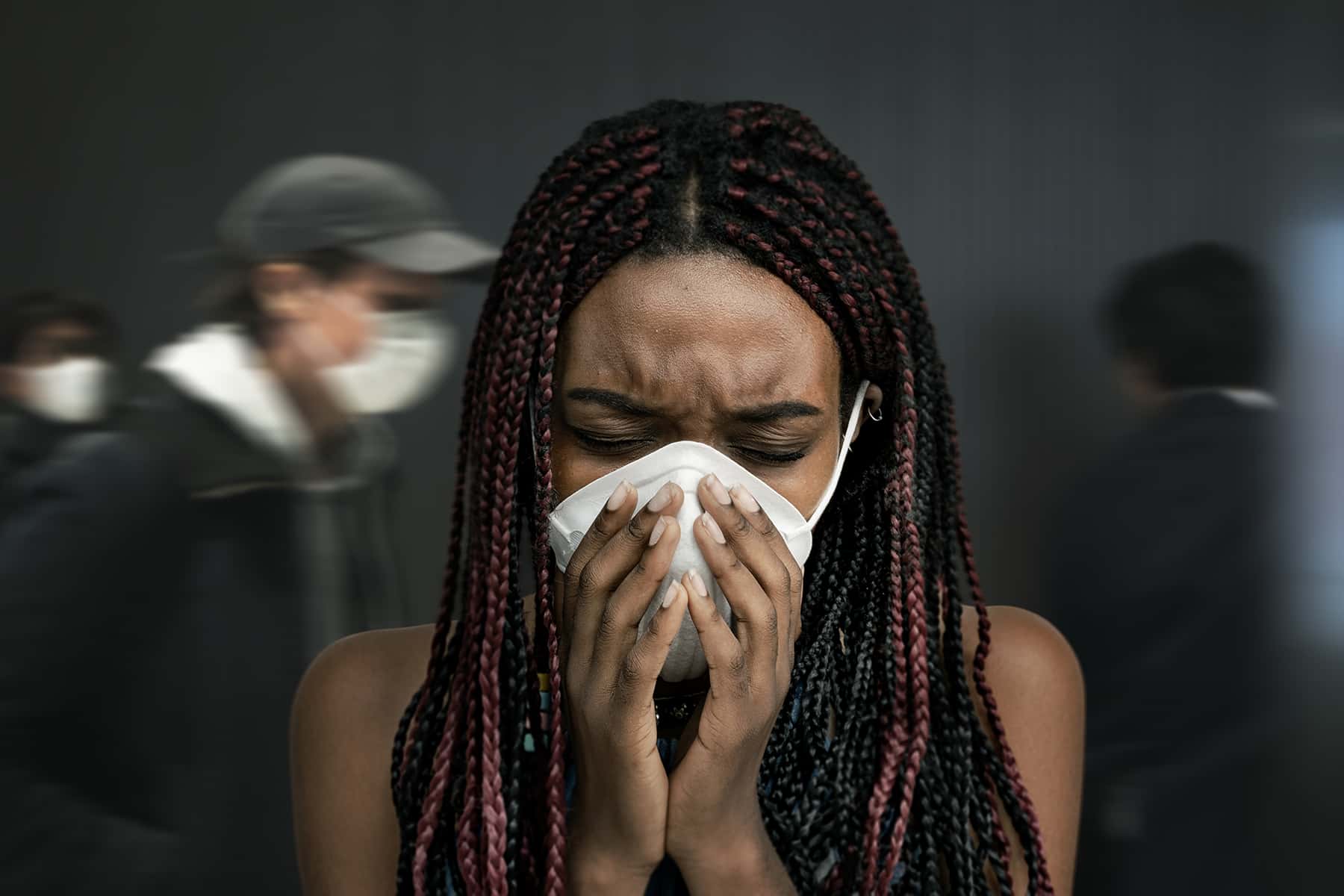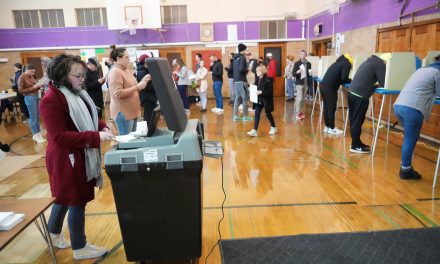
“Cultural racism can also lead to individual-level unconscious bias that can lead to discrimination against outgroup members. In clinical encounters, these processes lead to minorities receiving inferior medical care compared with care received by whites. Research indicates that across virtually every type of diagnostic and treatment intervention blacks and other minorities receive fewer procedures and poorer-quality medical care than do whites.” – David R. Williams
Florence and Laura Norman Professor of Public Health; Professor of African and African American Studies and Sociology, Harvard University T.H. Chan School of Public Health
Dr. David Williams in one of the foremost experts in the world on public health. His research has “enhanced our understanding of the complex ways in which race, socioeconomic status, racism, stress, and health behaviors can affect physical and mental health.” According to his info page at Harvard, he…
“…is the author of more than 450 scholarly papers in scientific journals and edited collections and his research has appeared in leading journals in sociology, psychology, medicine, public health and epidemiology. The Everyday Discrimination scale that he developed is currently one of the most widely used measures to assess perceived discrimination in health studies.”
His research warns us of what could be an issue in our response to the COVID-19 outbreak in America. Although many Americans would doubt that racism will play a role in how medical professionals will treat people during this terrible crisis, that is not what evidence has shown in the past.
We can learn a lot from the past. For hundreds of years medical practitioners in America have treated those of African descent differently. Harriet Washington provided the proof of decades of differential treatment of blacks in her groundbreaking book Medical Apartheid: The Dark History of Medical Experimentation on Black Americans form Colonial Times to the Present. Washington has served as a fellow in ethics at the Harvard Medical School, a fellow at the Harvard School of Public Health, and a senior research scholar at the National Center for Bioethics at Tuskegee University and a Knight Fellow at Stanford University as well as writing for such academic forums as the Harvard Public Health Review and The New England Journal of Medicine.
She quoted the late Richard Wright as he studied to be a medical researcher.
“When I began working at the institute, I recalled my adolescent dream of becoming a medical research worker. Daily I saw young… [white] boys and girls receiving instruction in chemistry and medicine that the average black boy or girl could never receive. When I was alone, I wandered and poked my fingers into strange chemicals, watched intricate machines trace red and black lines upon ruled paper. At times I paused and stared at the walls of the rooms, at the floors, at the wide desks at which the white doctors sat; and I realized—with a feeling that I could never quite get used to—that I was looking at the world of another race.” — Richard Wright, 1944
This was emblematic of what black people could expect from their experiences inside and outside of the medical establishment. Some doctors of color that I’ve spoken to in recent months have talked about the indignities and disparate treatment of patients of color that they have experienced during their careers. Harriet Washington wrote in 2008:
“Mounting evidence of the racial health divide confronts us everywhere we look, from doubled black infant death rates to African American life expectancies that fall years behind whites’. Infant mortality of African Americans is twice that of whites, and black babies born in more racially segregated cities have higher rates of mortality. The life expectancy of African Americans is as much as six years less than that of whites.”
Here in Wisconsin these disparities are some of the worst in the nation. Milwaukee has a huge problem in health outcomes between its black and white residents. There are many causes for these differences but racism in healthcare is certainly one of them. Recent studies by Dr. Williams and colleagues show that, “Increasing evidence indicates that racial discrimination is an emerging risk factor for disease and a contributor to racial disparities in health…Racial and ethnic differences in health, in which socially disadvantaged racial populations have worse health than whites, are large, pervasive across a broad range of outcomes, and persistent over time. They exist for the onset of disease, as well as the severity and course of illness.”
This is the brutal reality of life as a person of color in America. The disparate treatment of people of color has been a big part of the research conducted by Dr. David Williams and Harriet Washington. A careful reading of their research leaves those unaware of this differential treatment shocked. For many in the black community we are consciously aware of the differences.
There are fears within our community going back many years that teach us to distrust the healthcare system. The most well known of these experiences is the infamous “Tuskegee Syphilis Experiment.” It was known at the U.S. Public Health Service by its official name, Study of Syphilis in the Untreated Negro Male. The medical professionals promised free medical care to just over six hundred extremely poor black sharecroppers in Macon County, Alabama. There was a strong belief at the time among white researchers that syphilis progressed in a different way in the bodies of blacks than in those of whites. The “study” intentionally withheld treatment to these men from 1932 until 1972.
The men were recruited because they had already contracted syphilis and were lied to about receiving treatment while the Health Service studied what the disease did when it went untreated long-term. The men and their families had no idea they were being studied and not treated for what they were told was “bad blood.” The experiment ended for each man when they were autopsied after they died. They passed the disease along to their partners and many children were born with horrible congenital birth defects as a result of syphilis exposure. The racist assumption being studied was that because blacks had “primitive brains” the disease would do less damage to their brains than the brains of whites.
Washington described the progression of syphilis. “In the initial stage of sexually transmitted syphilis, a chancre, or hard, painless sore, appears on the genitals or other point of entry, followed by flulike symptoms. If the disease is not treated, it enters a long latent secondary stage before emerging to inflict an assortment of skin growths, running sores, gumma, bone decay, and heart damage. The final, tertiary, stage of syphilis may erupt several decades later, causing profound neurological damage—blindness, insanity (paresis), paralysis, and death.” In “the mid-1940s, antibiotics, particularly penicillin, were discovered to cure it.” The “patients” in the “experiments” were never given any treatment.
Those of us in the black community have heard rumors and innuendo about the “Tuskegee Study” for years. Some have said the black men were given syphilis although they were not. Some have said Tuskegee was chosen because Macon County had the highest rates of syphilis in the state, which is also untrue. These stories and many others have led to a lasting distrust of doctors and nurses in the black community. This distrust is well deserved. Adding to this distrust is the fact that after multiple Congressional hearings related to the 40-year “study” no one was held accountable and punished.
Going back to our earliest experience, during the 246 years we were enslaved in this country we were used as guinea pigs in medical experiments. Harriet Washington’s research shows that black bodies were a commodity in a system where “physicians were…dependent upon slavery, both for economic security and for the enslaved “clinical material” that fed the American medical research and medical training that bolstered physicians’ professional advancement.” Doctors “purchased” black people to perform experiments on and tested procedures and medicines before using them on whites.
These attitudes are not just from the really distant past. According to Washington, “Public Health Service physician Thomas Murrell could brashly insist in the 1940s, “The future of the Negro lies more in the research laboratory than in the schools…. When diseased, he should be registered and forced to take treatment before he offers his diseased mind and body on the altar of academic and professional education.” Additionally, Washington quoted a physician who spoke about the use of blacks as tools of experimentation. “[It was] cheaper to use Niggers than cats because they were everywhere and cheap experimental animals,” neurosurgeon Harry Bailey, M.D., reminisced in a 1960s speech he delivered while at Tulane Medical School.”
This racism was prevalent at the U.S. Public Health Service during the “Tuskegee study.” For over four decades untold numbers of medical doctors, nurses and other health care workers and researchers lied to men with syphilis so that they could monitor the deterioration and slow death caused by this disease, all because the men were black and not white. The “experiment” only ended when a journalist wrote exposed it in 1972.
The Tuskegee calamity alone is not enough to build distrust of the medical establishment. Once again Harriet Washington elaborates on this point. “The study is part of a pattern of experimental abuse, and many African Americans understand it as such, because a rich oral tradition has sustained remembrances of pain, abuse, and humiliation at the hands of physicians. We should remember that, as Vanessa Northington Gamble, M.D., director of Tuskegee University’s National Center for Bioethics in Research and Health Care, averred, “many African Americans fear and distrust Western medicine who have never heard of Tuskegee.”
One of the more disturbing instances of the racism in healthcare is the story of the “father of gynecology” Dr. James Marion Sims. “He conducted years of nightmarishly painful and degrading experiments, without anesthesia or consent, on a group of slave women.” Dr. Sims purchased enslaved black women to participate in, recruit and perform these extremely painful experiments without anesthesia. Despite this, he was until recently, one of the most celebrated medical professionals in U.S. history. Although Harriet Washington exposed him in her book in 2008 a statue celebrating him in Central Park in New York was finally removed in April 2018.
The belief back then when Sims was doing these very unethical practices as well as now among many white medical professionals is that blacks tolerate pain better than whites. They don’t think black people feel physical or emotional pain at the same level as whites do. This leads to them treating blacks with chronic pain as if they are exaggerating the pain they feel and thereby proscribing them pain meds at a much lower rate than among white patients.
Much like the hundreds of Confederate statues around the country, the one of Sims celebrated a lie. It told a story that disassociated his racist acts from his work. America has a history of disassociating racist acts from those whom it choses to celebrate.
Another element of the racist devaluation of black lives is how often blacks bodies were stolen from their graves and used as cadavers in medical schools around the country. According to Washington “the bodies of African Americans were once at the highest risk of being used for anatomy: In many areas, the majority of cadavers in research or dissection laboratories were black.”
Some will say that in this time that these past injustices should be forgotten. Nothing could be further from the truth. These past injustices are the reasons we still have mindsets that lead to present injustices. The research of Dr. Williams confirms how embedded racism has been in the delivery of medical care. “Recent research documents the persistence of these patterns and reveals that higher implicit bias scores among physicians are associated with biased treatment recommendations in the care of black patients. Providers’ implicit bias is also associated with poorer quality of patient–provider communication, including the provider’s nonverbal behavior. A recent study (2019) by Dr. Williams, Jourdyn A. Lawrence, and Brigette A. Davis tell us about the impact of discrimination in healthcare delivery.
“Discrimination is the most frequently studied domain of racism in the health literature. It exists in two forms: (a) where individuals and larger institutions, deliberately or without intent, treat racial groups differently, resulting in inequitable access to opportunities and resources (e.g., employment, education, and medical care) by race/ethnicity; and (b) self-reported discrimination, a subset of these experiences that individuals are aware of. These latter incidents are a type of stressful life experience that can adversely affect health, similar to other kinds of psychosocial stressors.”
The evidence is compelling and conclusive that the treatment of people of color, particularly blacks, contributes to many of the disparities in health outcomes. It is my hope that during this crisis we are not continuing to be victimized and not afforded the same level of care as whites. As I said earlier, copious amounts of research over many years has proven that this is the norm for blacks and other people of color. It is important that we don’t turn a blind eye to racism in our healthcare system. It does not matter if the bias is unconscious or conscious. In this crisis we need to ensure equitable treatment options.
For those in communities of color specifically, make sure you are getting factual information from reputable sources so that if you must deal with the healthcare system due to this pandemic that you are well equipped to ask the right questions and ensure you are getting the proper care you deserve.
“Of all the forms of inequality, injustice in health is the most shocking and the most inhumane.” – Rev. Dr. Martin Luther King Jr.














